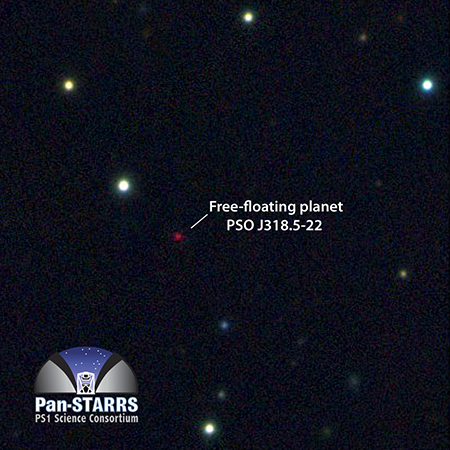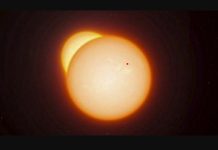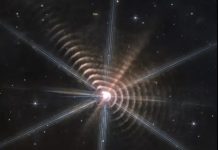This is an amazing discovery! Astronomers find a free-floating exoplanet that is not orbiting a star! PSO J318.5-22 has all the characteristics of young planets found around other stars, but it is drifting out there all alone!

This free-floating planet is only situated 80 light-years away from Earth, has a mass only six times that of Jupiter and was dubbed PSO J318.5-22. This strange planet formed about 12 million years ago, what is very young in planet lifetimes. The discovery paper of PSO J318.5-22 is being published by Astrophysical Journal Letters.
This unusual alien planet was discovered by the Pan-STARRS 1 (PS1) wide-field survey telescope on Haleakala, Maui. Follow-up observations using other telescopes in Hawaii show that it has properties similar to those of gas-giant planets found orbiting around young stars. However, PSO J318.5-22 is all by itself, without a host star.
This video was published 2 years ago. I do not know if they are talking about the same object!
By regularly monitoring the position of PSO J318.5-22 over two years with the Canada-France-Hawaii Telescope, the team directly measured its distance from Earth. Based on this distance, about 80 light-years, and its motion through space, the team concluded that PSO J318.5-22 belongs to a collection of young stars called the Beta Pictoris moving group that formed about 12 million years ago. In fact, the eponymous star of the group, Beta Pictoris, has a young gas-giant planet in orbit around it. PSO J318.5-22 is even lower in mass than the Beta Pictoris planet and probably formed in a different fashion.
Impacts of the discovery
During the past decade, only a handful of planets have been directly imaged, all of which are around young stars (less than 200 million years old). PSO J318.5-22 is one of the lowest-mass free-floating objects known, perhaps the very lowest. But its most unique aspect is its similar mass, color, and energy output to directly imaged planets.
Planets found by direct imaging are incredibly hard to study, since they are right next to their much brighter host stars. PSO J318.5-22 is not orbiting a star so it will be much easier for us to study. It is going to provide a wonderful view into the inner workings of gas-giant planets like Jupiter shortly after their birth.












